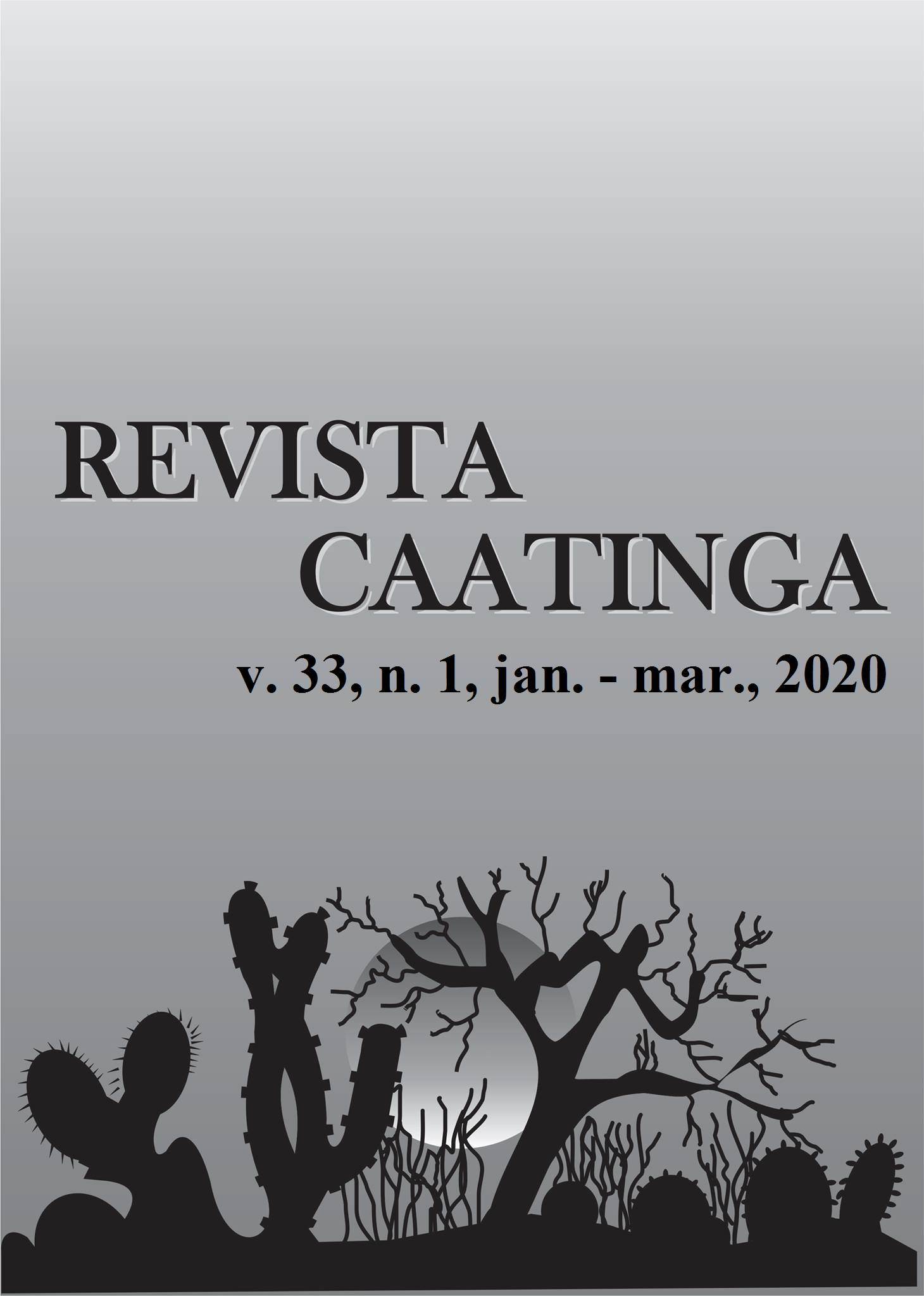PERIODICITY OF EXPOSURE OF HYDROPONIC LETTUCE PLANTS TO NUTRIENT SOLUTION
DOI:
https://doi.org/10.1590/1983-21252020v33n109rcKeywords:
Lactuca sativa L. Leaf nutrient concentration. Diagnostic leaf. Profitability. NFT hydroponic system. Intermittent flow of nutrient solution.Abstract
A balanced periodicity of the nutrient solution flow is essential for better agronomic performances and low production costs in hydroponic systems. Thus, the objective of this work was to evaluate the effect of periodicity of exposure of lettuce plants to the nutrient solution in an NFT hydroponic system on the production, nutrition, and profitability of this crop. The experiment was conducted in a randomized block design with five replications. The treatments consisted of four periodicities of exposure of lettuce plants to the nutrient solution, consisting of intervals of 60, 30, and 15 minutes between pumping periods of 15 minutes; and uninterrupted flow of the nutrient solution. The plants were harvested at 30 days after transplanting, and 15 lettuce plants of each experimental plot were used to determine total fresh weight; root fresh weight; shoot freshweight; and contents of N, P, K, Ca, Mg, S, B, Cu, Fe, Mn, and Zn in shoots, roots, and in the diagnostic leaf; accumulation of these nutrients in shoots and roots; and nitrate and ammonium contents in plant shoot. The highest production and profitability of lettuce were found using uninterrupted nutrient solution flow, which provided higher shoot and root nutrient contents to plants, and resulted in a better nutrient use efficiency.
Downloads
References
ASSOCIAÇÃO BRASILEIRA DO COMERCIO DE SEMENTES E MUDAS – ABCSEM. Dados do setor. Disponível em: <http://www.abcsem.com.br/dados-do-setor>. Acesso em: 26 jun. 2017.
BACKES, F. A. A. L. et al. Influência da temperatura do ar e da radiação solar no acúmulo de fitomassa da alface. Revista Brasileira de Agrometeorologia, 11: 275-283, 2003.
CARON, B. O. et al. Eficiência de conversão da radiação solar fotossinteticamente ativa interceptada em fitomassa de alface. Revista Brasileira de Agrometeorologia, 11: 261-268, 2003.
CASAROLI, D. et al. Desempenho de onze cultivares de alface em duas formas diferentes de canais de cultivo, no sistema hidropônico. Revista da Faculdade de Zootecnia, Veterinária e Agronomia, 10: 25-33, 2003.
COMPANHIA NACIONAL DE ABASTECIMENTO - CONAB. Programa brasileiro de modernização do mercado hortigranjeiro. Disponível em: <http://www3.ceasa.gov.br/prohortweb>. Acesso em: 26 jun. 2017.
FAQUIN, V.; FURLANI NETO, A. E.; VILELA, L. A. A. Produção de alface em hidroponia. Lavras, MG: UFLA-FAEPE, 1996. 50 p.
HORTICERES. Alface Betty: Cultivo de Verão. 2019. Disponível em: <https://www.horticeres.com.br/produtos/folhosas/alface/alface-betty> Acesso em: 30 ago. 2019.
LAWLOR, D. W.; TEZARA, W. Causes of decreased photosynthetic rate and metabolic capacity in water-deficient leaf cells: a critical evaluation of mechanisms and integration of processes. Annals of Botany, 103: 561-579, 2009.
LEITE, D. et al. Viabilidade econômica da implantação do sistema hidropônico para alface com recursos do PRONAF em Matão-SP. Revista iPecege, 2: 57-65, 2016.
LEIVA ESPINOZA, S. T. et al. Comportamiento productivo de 11 variedades de lechuga (Lactuca sativa L.) en sistema hidropónico NFT recirculante (Chachapoyas – Amazonas). Revista de Investigación de Agroproducción Sustentable, 2: 50-56, 2019.
LONDERO, F. A. A.; AITA, A. Comercialização de alface hidropônica. In: SANTOS, O. (Eds.). Hidroponia da alface. 1. ed. Santa Maria, RS: UFSM, 2000. 145-152 p.
LUZ, G. L. et al. Ação dos intervalos entre irrigações no sistema radicular da alface em hidroponia. Interciencia, 42: 370-374, 2017.
LUZ, G. L. et al. Consumo de energia elétrica e produção de alface hidropônica com três intervalos entre irrigações. Ciência Rural, 38: 815-818, 2008.
MALAVOLTA, E.; VITTI, G. C.; OLIVEIRA, S. A. Avaliação do estado nutricional das plantas: princípios e aplicações. 2. ed. Piracicaba, SP: Potafos, 1997. 319 p.
MARTINS, C. M. et al. Curva de absorção de nutrientes em alface hidropônica. Revista Caatinga, 22: 123-128, 2009.
MATSUNAGA, M. B.; TOLEDO, P. F. Metodologia de custo de produção utilizada pelo IEA. Agricultura em São Paulo, 23: 123-139, 1976.
MOHAMMED, S. Introduction to Nutrient Film Technique. In: MOHAMMED, S. (Eds.). Tomorrow's Agriculture. 1. ed. Basel, Switzerland: Springer, 2018. p. 7-11.
PAULUS, D. et al. Crescimento, consumo hídrico e composição mineral de alface cultivada em hidroponia com águas salinas. Revista Ceres, 59: 110-117, 2012.
PRADO, R. M.; CECÍLIO FILHO, A. B. Nutrição e adubação de hortaliças. Jaboticabal, SP: Funep, 2016. 600 p.
ROVER, S.; BARCELOS-OLIVEIRA, J. L.; TEIXEIRA, M. P. Viabilidade econômica da implantação de um sistema de cultivo de alface hidropônica em Tijucas-Santa Catarina. In: ENCONTRO BRASILEIRO DE HIDROPONIA, 2, SIMPÓSIO BRASILEIRO DE HIDROPONIA, 3, 2014, Florianópolis. Anais... Florianópolis: UFSC, 2014. p. 93.
SIDDIQI, M. Y.; GLASS, A. D. M.. Utilization index: a modified approach to the estimation and comparison of nutrient utilization efficiency in plants. Journal of Plant Nutrition, 4: 289-302, 1981.
TAIZ, L.; ZEIGER, E. Fisiologia vegetal. Porto Alegre, RS: Artmed, 2004. 719 p.
TEDESCO, M. J.; VOLKWEISS, S. J.; BOHNEN, H. Análises de solo, plantas e outros materiais. 1. ed. Porto Alegre, RS: UFRGS, 1985. 95 p. (Boletim Técnico, 5).
TRANI, P.; RAIJ, B. V. Hortaliças. In: RAIJ, B. V. et al. (Eds). Recomendações de adubação e calagem para o estado de São Paulo Campinas, SP: IAC, 1997. p. 157-164. (Boletim técnico, 100).
Downloads
Published
Issue
Section
License
Os Autores que publicam na Revista Caatinga concordam com os seguintes termos:
a) Os Autores mantêm os direitos autorais e concedem à revista o direito de primeira publicação, com o trabalho simultaneamente licenciado sob a Licença Creative Commons do tipo atribuição CC-BY, para todo o conteúdo do periódico, exceto onde estiver identificado, que permite o compartilhamento do trabalho com reconhecimento da autoria e publicação inicial nesta revista, sem fins comerciais.
b) Os Autores têm autorização para distribuição não-exclusiva da versão do trabalho publicada nesta revista (ex.: publicar em repositório institucional ou como capítulo de livro), com reconhecimento de autoria e publicação inicial nesta revista.
c) Os Autores têm permissão e são estimulados a publicar e distribuir seu trabalho online (ex.: em repositórios institucionais ou na sua página pessoal) a qualquer ponto antes ou durante o processo editorial, já que isso pode gerar alterações produtivas, bem como aumentar o impacto e a citação do trabalho publicado (Veja O Efeito do Acesso Livre).







